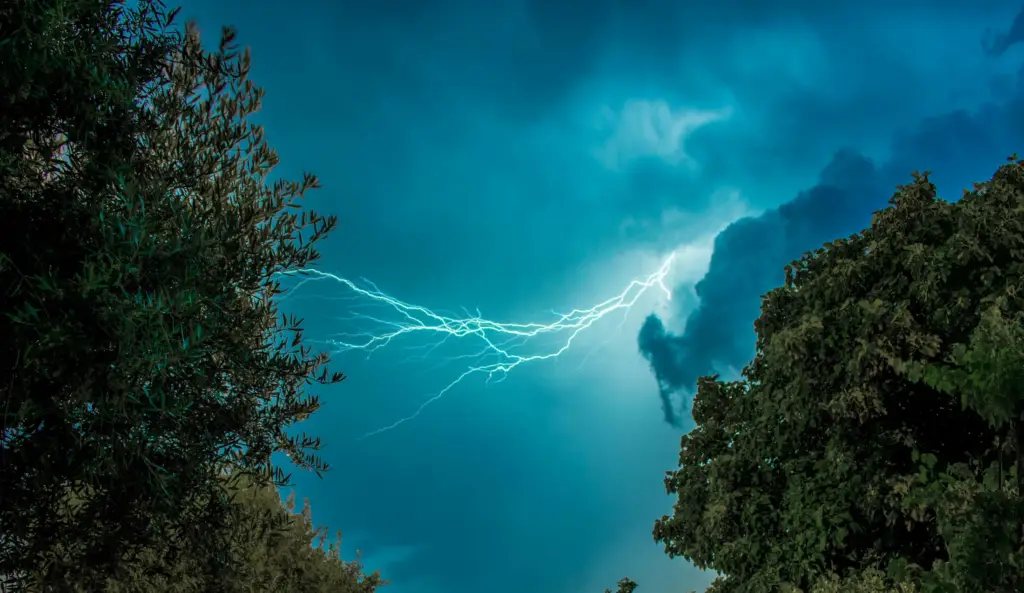When nature unleashes its power, it can have significant consequences for the landscape around us. One such event is a lightning strike, which can cause damage to trees, posing risks to property and safety. As arborists committed to preserving green spaces and ensuring the well-being of both people and nature, we understand the importance of promptly addressing tree damage caused by lightning strikes. Here we’ll explore what to do when lightning strikes a tree to mitigate risks and preserve the health of your landscape.

Assessing the Damage
The first step after a lightning strike is to assess the extent of the damage to the tree. Look for signs such as split bark, charred wood, or branches that have been torn or broken off. Assess the tree’s overall condition, including its stability and the likelihood of it posing a danger to nearby structures or people.
Safety First
Safety should always be the top priority when dealing with tree damage from a lightning strike. Ensure that the area around the tree is clear of debris and hazards. If the tree is near power lines or structures, exercise extreme caution and contact professionals to assess the situation and handle any potential risks.
Contact a Certified Arborist
For proper evaluation and treatment of the damaged tree, it’s advisable to contact a certified arborist. Arborists have the expertise and knowledge to assess the extent of the damage, determine the tree’s viability, and recommend the appropriate course of action. They can also safely remove any damaged branches or limbs and provide guidance on tree care and maintenance to promote recovery.
Pruning and Trimming
In cases where the lightning strike has caused damage to branches or limbs, pruning and trimming may be necessary to remove compromised sections of the tree. Proper pruning techniques help promote healing and reduce the risk of further damage or disease. Certified arborists can assess the tree’s structure and determine the best approach for pruning to ensure the tree’s long-term health and stability.
Tree Health Evaluation
Beyond addressing immediate damage, it’s essential to evaluate the overall health of the tree following a lightning strike. Even if the visible damage appears minimal, the internal structure of the tree may have been compromised. A certified arborist can conduct a thorough inspection to assess the tree’s health and identify any underlying issues that may require attention.
Tree Removal as a Last Resort
In many cases, a lightning strike may cause severe damage that compromises the structural integrity of the tree, making it a safety hazard. In such instances, tree removal may be necessary to prevent accidents or property damage. It’s always most important to ensure the safety of yourself, those you care about, and your property.
Preventative Measures
While it’s impossible to prevent lightning strikes, there are steps you can take to reduce the risk of damage to trees on your property. Avoid planting trees in open areas where they are more susceptible to lightning strikes, and consider installing lightning protection systems for valuable or historically significant trees.
Work with a Professional Tree Removal Expert
When lightning strikes a tree, prompt action is essential to assess the damage, ensure safety, and preserve the health of the tree. By working with us at Hagan & Sons, and following proper tree care practices, you can minimize the impact of lightning strikes on your landscape and enjoy the many benefits that trees provide for years to come. If you have experienced tree damage from a lightning strike, don’t hesitate to reach out to us for expert assistance and guidance.
